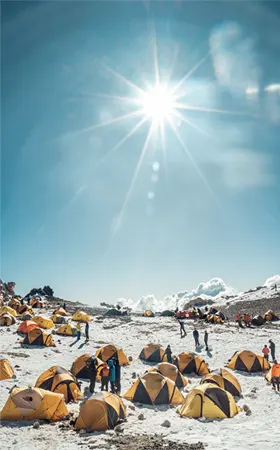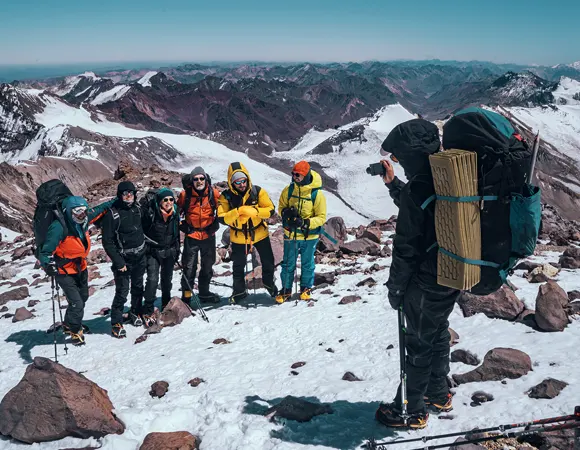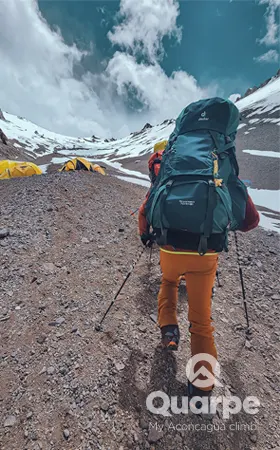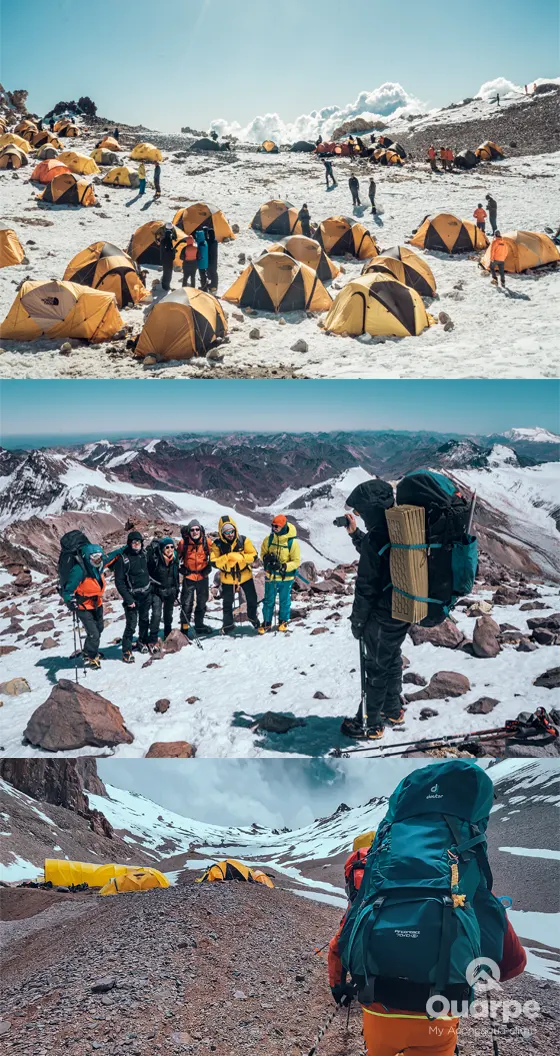General Information
Here you will find technical details of each type of expedition, such as the duration, the level of difficulty it has, the level of preparation required and more useful information to prepare the expedition.
Quick information
These are some important aspects of the expedition
Facing the imposing summit of Aconcagua requires meticulous preparation and a comprehensive understanding of the challenges that await on this majestic mountain. Here, we break down the key aspects to consider to ensure a successful and rewarding expedition:
Physical and Mental Preparation
Aconcagua demands a solid level of physical fitness. Cardiovascular training, endurance, and acclimatization are crucial. Resilient mindset and adaptability to changing conditions are equally vital.
Proper Equipment
Ensure your gear is in optimal condition. From technical clothing and footwear to high-altitude sleeping bags, each item plays a vital role in your comfort and safety during the expedition.
Acclimatization
Plan a gradual ascent to allow your body to adapt to high altitudes. Acclimatization days are essential to reduce the risk of altitude sickness and maximize your chances of successfully reaching the summit.
Services of Experienced Guides
Having expert guides is essential. They not only guide you during the ascent but also share their knowledge about the mountain, weather conditions, and acclimatization strategies.
Altitude Safety
Safety is paramount at extreme altitudes. Rescue teams, medical supplies, and emergency plans are essential elements to address potential critical situations.
Camp Logistics
Understanding camp logistics on the mountain is crucial. From route selection to supply management and the arrangement of high-altitude camps, meticulous planning is essential.
Environmental Responsibility
Encourage responsible and sustainable practices. Adhere to “Leave No Trace” principles, minimizing environmental impact and preserving the natural beauty of Aconcagua.
Weather Assessment
Mountain weather conditions can change rapidly. Monitor forecasts and be flexible in your itinerary to adapt to current conditions, always prioritizing safety.
Permits and Regulations
Manage ascent permits in advance. Comply with all regulations of the Aconcagua Provincial Park to ensure a seamless experience.
Communication and Connection
Maintain open communication with your team and guides. Effective connection contributes to safety and enhances coordination during the expedition.
Facing Aconcagua is a unique and challenging experience. With proper preparation and a balanced approach, you can fully enjoy this thrilling journey to the summit. Good luck on your expedition!




Difficulty level
A challenging ascent, Aconcagua demands strong physical fitness and mental resilience. Trekkers navigate rugged terrain and high altitudes, facing variable weather conditions.
Altitude reached
Conquer Aconcagua's summit at 6,959 meters (22,837 feet). The highest peak in the Americas, the climb offers breathtaking views amid challenging alpine conditions.
Energy requirement
Aconcagua demands high energy levels. The trek requires endurance for long hikes, and proper nutrition is crucial for sustained performance at high altitudes.
Expedition duration
Aconcagua expeditions typically span 15-20 days, allowing for acclimatization, ascent, and descent. The journey involves gradual altitude gain and rest days for optimal adaptation.